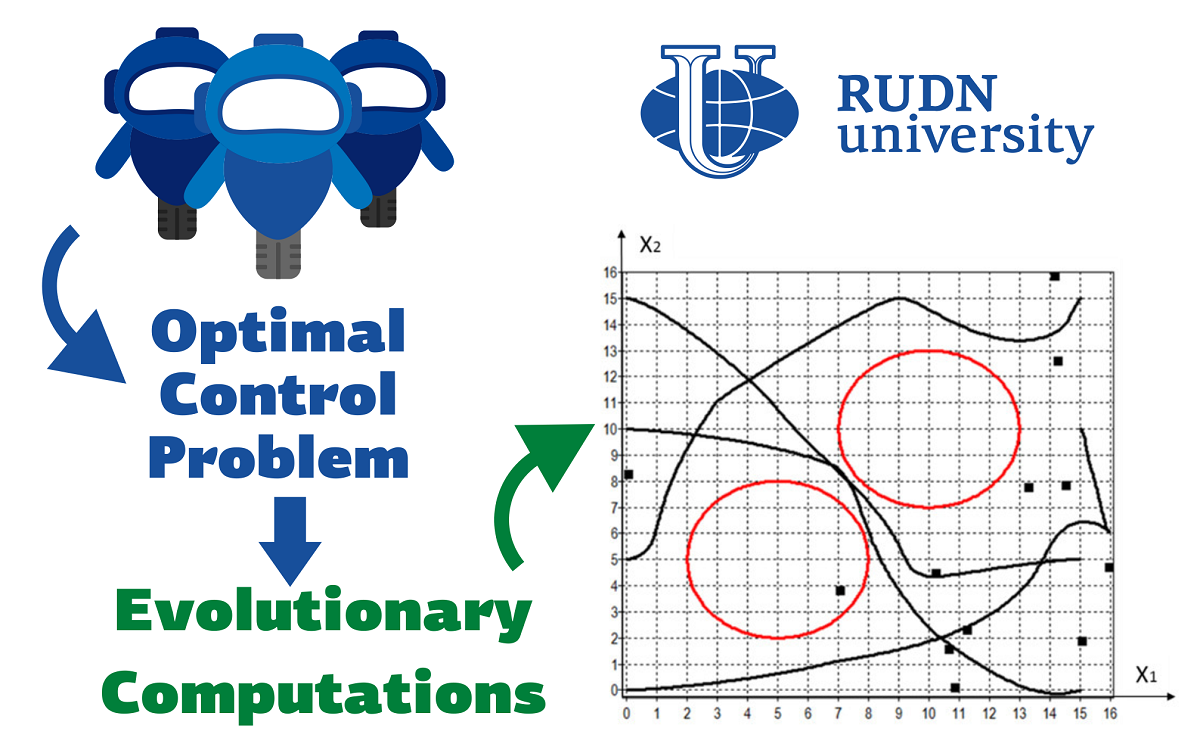RUDN University Scientist Compares Algorithms for Solving the Optimal Control Problem

“A group of robots should move from given initial states to terminal ones while avoiding obstacles in a minimum time. The problem belongs to the class of infinite-dimensional optimization. There are two approaches to solve it numerically. A direct approach is based on a discretization of the control function and reduction to the finite-dimensional optimization. An indirect approach is based on the Pontryagin maximum principle for the transition to the boundary value problem and its numerical solution”, said Sergey Konstantinov, Senior Lecturer of the на Department of Mechanics and Control Processes of RUDN University.
Scientists have proposed two approaches to solving the optimal control problem based on direct methods. In a test, robots should move from the starting point to the end point and not collide with obstacles and other robots. In the first approach, a group of robots was considered as a single object. In this case, the optimal control problem is reduced to a non-linear programming problem. This means that it cannot be reduced to a system of linear equations, which complicates the problem. In the second approach, they first find attractors for each robot — special points on the plane, that “tell” the robot how to avoid obstacles on the way. The results obtained were then used to solve the entire original problem. Calculations based on two approaches were implemented using evolutionary algorithms and the random search method. The researchers conducted 10 tests for each of the four evolutionary algorithms and the random search method and compared their performance.
The effectiveness of two approaches and 5 algorithms (the random search method and 4 evolutionary algorithms: the genetic algorithm, particle swarm optimization, bee algorithm, and gray wolf optimizer) was evaluated based on the value of the objective function — the function that needs to be minimized in the optimal control problem. The smaller it is, the better the algorithm performed. For the first approach, all evolutionary algorithms turned out to be more efficient than the random search method. The particle swarm optimization performed best, with an average value of 5.5 for the objective function. For the random search method, this value was almost three times higher — 15.83. For the second approach, the random search method also proved to be the least effective. The evolutionary algorithms worked about equally efficiently. In one of the tests, gray wolf optimizer gave the minimum value of the objective function — 2.49.
“Currently, there are no universal numerical methods for solving optimal control problems. We plan to continue the study of evolutionary algorithms and consider other new evolutionary algorithms, including hybrid ones”, said Sergey Konstantinov, Senior Lecturer of the Department of Mechanics and Mechatronics of RUDN University.
The results are published in the journal Applied Sciences. https://www.mdpi.com/2076-3417/11/15/7096
The project to develop a cellular model of the placenta became the winner in the Scientific Materials category of the Young Scientists 3.0 competition, organized with the support of the Presidential Grants Foundation and T-Bank.
Ten scientific journals published by RUDN University have been included in the highest level of the state list of scientific publications, the White List.
Forests are not only the lungs of the planet, but also home to millions of species. However, it has remained unclear how underground interactions between trees and fungi affect forest species richness in different climatic conditions. Previous studies have yielded conflicting results: in some regions, the dominance of certain fungi reduced tree diversity, while in others it increased it.
The project to develop a cellular model of the placenta became the winner in the Scientific Materials category of the Young Scientists 3.0 competition, organized with the support of the Presidential Grants Foundation and T-Bank.
Ten scientific journals published by RUDN University have been included in the highest level of the state list of scientific publications, the White List.
Forests are not only the lungs of the planet, but also home to millions of species. However, it has remained unclear how underground interactions between trees and fungi affect forest species richness in different climatic conditions. Previous studies have yielded conflicting results: in some regions, the dominance of certain fungi reduced tree diversity, while in others it increased it.